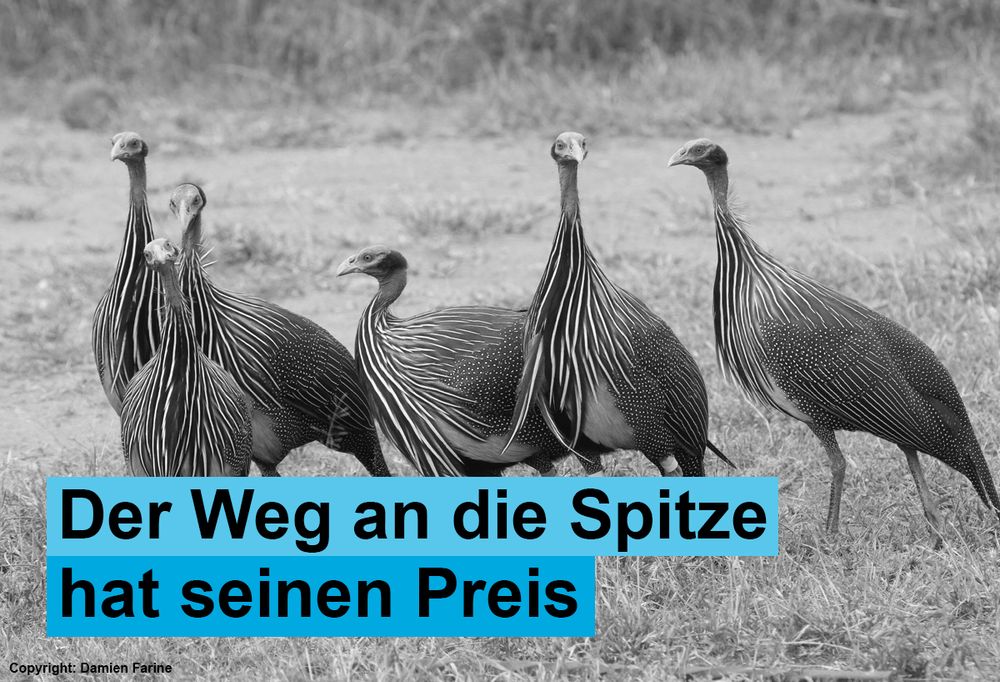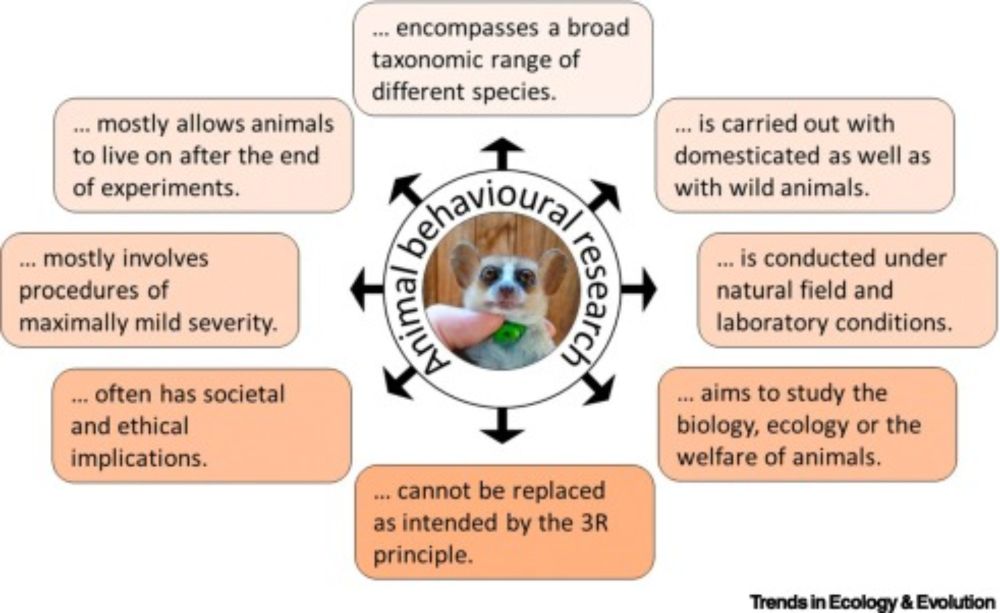Hanja Brandl
@hanjabrrr.bsky.social
Postdoc @UniversitätKonstanz | CBehav
Studying birds and other critters. Social Behaviour, Ecology, Physiology
Studying birds and other critters. Social Behaviour, Ecology, Physiology
New paper out exploring synchronization of heart rate variability among artisanal fishers who cooperate with dolphins to catch their prey. We show that social factors drive their physiological synchronization during collective hunting. Greatly enjoyed the opportunity to work on this amazing system ♥️
A special type of fishing takes place in southern Brazil: dolphins drive the prey into the net. The fishermen work so closely together that even their heart rates synchronise. Discovered by a research team led by #UniKonstanz @cbehav.bsky.social biologist @hanjabrrr.bsky.social: t1p.de/d56g3

October 30, 2025 at 2:33 PM
New paper out exploring synchronization of heart rate variability among artisanal fishers who cooperate with dolphins to catch their prey. We show that social factors drive their physiological synchronization during collective hunting. Greatly enjoyed the opportunity to work on this amazing system ♥️
Reposted by Hanja Brandl
They find neat results. Fishers are more synchronised the longer they spend in the water, the closer they are, and the more cooperative they are (with each other). Yet, heart rate synchrony doesn't translate to fishing success (when dolphins cue)—probably because they have to cast asynchronously. 6/

October 29, 2025 at 4:25 AM
They find neat results. Fishers are more synchronised the longer they spend in the water, the closer they are, and the more cooperative they are (with each other). Yet, heart rate synchrony doesn't translate to fishing success (when dolphins cue)—probably because they have to cast asynchronously. 6/
Reposted by Hanja Brandl
They then conducted a cross-wavelet power analysis of heart rate variability, which reveals patterns of heart rate synchrony over time and across frequencies. This captures whether synchrony is in phase or anti-phase. 5/

October 29, 2025 at 4:25 AM
They then conducted a cross-wavelet power analysis of heart rate variability, which reveals patterns of heart rate synchrony over time and across frequencies. This captures whether synchrony is in phase or anti-phase. 5/
Reposted by Hanja Brandl
In the second paper, @hanjabrrr.bsky.social and João Valle-Perreira fitted heart rate + GPS sensors to fishers while they fished together with dolphins. This provided simultaneous data on position and heart rate across the line of fishers.
4/
4/

October 29, 2025 at 4:25 AM
In the second paper, @hanjabrrr.bsky.social and João Valle-Perreira fitted heart rate + GPS sensors to fishers while they fished together with dolphins. This provided simultaneous data on position and heart rate across the line of fishers.
4/
4/
Reposted by Hanja Brandl
Genau wie viele Menschen zeigen Tiere Anzeichen von Stress, wenn sie versuchen, für eine Gruppe von Artgenossen die Führung zu übernehmen. Zu diesem Ergebnis kommt ein internationales Forschungsteam unter Beteiligung von #UniKonstanz @cbehav.bsky.social BiologInnen: t1p.de/zud05

July 23, 2025 at 3:10 PM
Genau wie viele Menschen zeigen Tiere Anzeichen von Stress, wenn sie versuchen, für eine Gruppe von Artgenossen die Führung zu übernehmen. Zu diesem Ergebnis kommt ein internationales Forschungsteam unter Beteiligung von #UniKonstanz @cbehav.bsky.social BiologInnen: t1p.de/zud05
New paper out 🥳
The physiological costs of leadership in collective movements. - Trying to lead the group can be stressful, so it might not always be worth it!#openaccess at @currentbiology.bsky.social @cbehav.bsky.social @mpi-animalbehav.bsky.social
The physiological costs of leadership in collective movements. - Trying to lead the group can be stressful, so it might not always be worth it!#openaccess at @currentbiology.bsky.social @cbehav.bsky.social @mpi-animalbehav.bsky.social
Led by @hanjabrrr.bsky.social, @damienfarine.bsky.social, and I, we combined ECG and GPS tracking from a whole group of vulturine guineafowl to show that collective movements, and especially attempting to lead under disagreement greatly increased Heart Rates.
www.sciencedirect.com/science/arti...
www.sciencedirect.com/science/arti...

The physiological cost of leadership in collective movements
Individuals can gain substantial benefits from collective actions.1,2,3,4,5,6,7 However, collective behaviors introduce new challenges, like coordinat…
www.sciencedirect.com
July 23, 2025 at 6:55 AM
New paper out 🥳
The physiological costs of leadership in collective movements. - Trying to lead the group can be stressful, so it might not always be worth it!#openaccess at @currentbiology.bsky.social @cbehav.bsky.social @mpi-animalbehav.bsky.social
The physiological costs of leadership in collective movements. - Trying to lead the group can be stressful, so it might not always be worth it!#openaccess at @currentbiology.bsky.social @cbehav.bsky.social @mpi-animalbehav.bsky.social
Read our commentary on a new article discussing animal ethics in behavioural reserach! onlinelibrary.wiley.com/doi/full/10....
February 26, 2025 at 11:17 AM
Read our commentary on a new article discussing animal ethics in behavioural reserach! onlinelibrary.wiley.com/doi/full/10....
Reposted by Hanja Brandl
ETHOLOGY: Animal ethics in behavioural studies - read our commentary (by @hanjabrrr.bsky.social and Fritz Trillmich) on a recently published TREE @cp-trendsecolevo.bsky.social article promoting a more nuanced view on animal testing 🦝🔬
It's #OpenAccess: onlinelibrary.wiley.com/doi/full/10....
It's #OpenAccess: onlinelibrary.wiley.com/doi/full/10....

Animal research revisited – the case of behavioural studies
Animal research is a matter of intense public debate, with some people supporting
and some opposing it. Drawing from examples of behavioural biology, we argue that
such an ‘all-or-nothing’ debate fall...
www.cell.com
February 26, 2025 at 10:20 AM
ETHOLOGY: Animal ethics in behavioural studies - read our commentary (by @hanjabrrr.bsky.social and Fritz Trillmich) on a recently published TREE @cp-trendsecolevo.bsky.social article promoting a more nuanced view on animal testing 🦝🔬
It's #OpenAccess: onlinelibrary.wiley.com/doi/full/10....
It's #OpenAccess: onlinelibrary.wiley.com/doi/full/10....
Reposted by Hanja Brandl
Social transmission of stress in zebra finches bird: "Effects were stronger in colonies with a greater proportion of stress-treated individuals. Stressors can reach beyond directly exposed individuals by also affecting their group mates."
🚨 Evidence for social transmission of stress in zebra finches
In this huge experiment, Hanja Brandl experimentally stressed zebra finches in replicated colonies, and found that their group mates (who were not exposed) showed similar behavioural responses.
royalsocietypublishing.org/doi/epdf/10....
In this huge experiment, Hanja Brandl experimentally stressed zebra finches in replicated colonies, and found that their group mates (who were not exposed) showed similar behavioural responses.
royalsocietypublishing.org/doi/epdf/10....

November 21, 2024 at 7:30 AM
Social transmission of stress in zebra finches bird: "Effects were stronger in colonies with a greater proportion of stress-treated individuals. Stressors can reach beyond directly exposed individuals by also affecting their group mates."
Reposted by Hanja Brandl
🚨 Evidence for social transmission of stress in zebra finches
In this huge experiment, Hanja Brandl experimentally stressed zebra finches in replicated colonies, and found that their group mates (who were not exposed) showed similar behavioural responses.
royalsocietypublishing.org/doi/epdf/10....
In this huge experiment, Hanja Brandl experimentally stressed zebra finches in replicated colonies, and found that their group mates (who were not exposed) showed similar behavioural responses.
royalsocietypublishing.org/doi/epdf/10....

November 13, 2024 at 4:34 PM
🚨 Evidence for social transmission of stress in zebra finches
In this huge experiment, Hanja Brandl experimentally stressed zebra finches in replicated colonies, and found that their group mates (who were not exposed) showed similar behavioural responses.
royalsocietypublishing.org/doi/epdf/10....
In this huge experiment, Hanja Brandl experimentally stressed zebra finches in replicated colonies, and found that their group mates (who were not exposed) showed similar behavioural responses.
royalsocietypublishing.org/doi/epdf/10....

